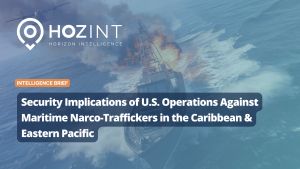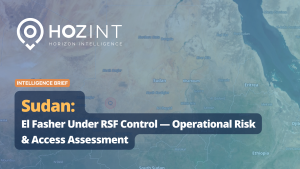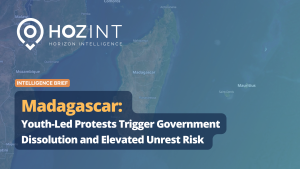On 6 August 2025, the Italian government formally approved the long-debated Messina Strait Bridge project, reviving a decades-old infrastructure vision to physically connect Sicily to mainland Italy via a 3.2 km suspension bridge. This megaproject, spearheaded by the government of Prime Minister Giorgia Meloni and energetically promoted by Deputy Prime Minister Matteo Salvini, is expected to cost over EUR 13.5 billion. The bridge will span from Messina in Sicily to Villa San Giovanni in Calabria—two regions that have long grappled with political instability, organised crime, and structural economic challenges.
Construction is set to begin by the end of 2025, with early logistical preparations already underway. The bridge, touted as a feat of modern engineering, will be the longest suspension bridge in the world upon completion. However, beyond the technical ambitions, the project enters a complex environment shaped by entrenched criminal networks, seismic hazards, political polarisation, and growing public opposition.

Key Points
-
Organised crime, corruption, and political patronage remain the most significant risks, especially given past criminal infiltration in local infrastructure procurement in Calabria and Sicily.
-
Smuggling activity, including drugs and arms trafficking across the Strait, poses a persistent security threat that could be exacerbated by improved transport links.
-
Public protests are intensifying, with the No Bridge Movement showing clear intent to escalate actions against the project, including threats to occupy construction sites.
-
The bridge site lies in one of Europe’s most seismically active regions, posing severe risks to structural integrity during and after construction.
-
Cyber sabotage and infrastructure disruption are emerging risks, particularly as the project attracts international media and political attention.
Threat Landscape and Risk Analysis
Corruption and Organised Crime
The regions surrounding the strait, particularly Messina and Villa San Giovanni, are well-documented hubs for organised criminal activity, notably by the Sicilian Mafia and the Calabrian ‘Ndrangheta. These groups have historically infiltrated public procurement and infrastructure projects to extract profit through collusion, coercion, and front companies.
This risk is far from theoretical. In December 2019, authorities arrested 11 individuals, including the mayor of Villa San Giovanni, for corruption related to public infrastructure contracts. The charges included collusive tendering, embezzlement, and links to organised crime. This incident, directly tied to the management of ferry operations across the strait, highlights the readiness and ability of criminal groups to exploit any large-scale infrastructure investment in the area.
Risk: High. Organised crime is highly likely to target bridge-related procurement and construction processes through corruption and coercion.
Drug and Arms Trafficking
The Strait of Messina is a well-known corridor for criminal smuggling operations. Its strategic location and transport infrastructure have historically facilitated the movement of illicit goods between Sicily and the mainland. The potential for enhanced logistical efficiency via the bridge introduces risks that traffickers may exploit to move narcotics, weapons, and contraband with greater ease.
In March 2025, customs officials seized 2 kg of cocaine and 40 kg of hashish in a vehicle coming off a ferry from Calabria to Messina. That same month, an arms trafficking ring was dismantled in Reggio Calabria’s Arghillà district. These operations underline the frequency and organisation of smuggling across the Strait.
Risk: Moderate to high. Enhanced connectivity through the bridge may increase trafficking efficiency unless strict security controls are enacted.
Public Protest and Civil Unrest
The project has already reignited local opposition, particularly from the No Bridge Movement, a civic and environmental coalition long opposed to the bridge on ecological, financial, and social grounds.
On 7 August 2025, tensions escalated dramatically during a press conference by Minister Matteo Salvini at Torre Faro, where protesters disrupted the event with banners and chants. The situation intensified when Salvini provocatively kissed a supporter in front of the demonstrators, inflaming tempers. The protest was led by former Messina mayor Renato Accorinti, who declared: “We are ready to occupy the construction sites, even if it means jail.”
The resurgence of local activism is likely to be bolstered by support from more established national and transnational environmentalist movements. Groups such as Extinction Rebellion, Greenpeace, and Fridays for Future, all of which have a strong record of targeting large infrastructure projects perceived as environmentally harmful, could align with or amplify local resistance. Their involvement would elevate the visibility of the protests both domestically and internationally, potentially transforming local demonstrations into a broader environmental campaign with global resonance.
Such support networks could bring not only manpower and media attention, but also protest tactics involving civil disobedience, site occupations, and legal challenges aimed at halting or delaying construction phases.
Risk: Moderate. Local and international activism is likely to intensify, potentially involving coordinated disruptions and reputational challenges throughout the construction lifecycle.
Seismic and Engineering Risk
The Messina Strait lies above a major geological fault line and is one of the most seismically active areas in Europe. The catastrophic 1908 earthquake, which killed over 100,000 people in Messina and Reggio Calabria, serves as a historical reminder of the seismic volatility of the region.
Despite advancements in engineering and seismic design, the risk of ground movement, either during or after construction, poses a significant threat to the bridge’s integrity. Even moderate earthquakes could lead to costly delays, safety concerns, or structural damage.
Risk: Severe. Earthquakes pose a high-impact risk to the construction and long-term viability of the bridge.
Cyber and Infrastructure Sabotage
Large infrastructure projects are increasingly vulnerable to cyber threats and hacktivist interference, especially when they become politicised or environmentally controversial. Although the Messina bridge has not yet been subject to specific cyber activity, similar projects worldwide have been targeted by ransomware groups, cyber-activists, and state-linked disruptors.
Global trends observed in 2024 and 2025, including cyber operations linked to pro-Russian and pro-Palestinian actors targeting transport infrastructure, suggest that once construction gains momentum and media visibility, the bridge may become an ideological or strategic target.
Risk: Low to moderate. The symbolic nature of the project could draw digital attacks, even if no threats have materialised yet.
Conclusion
The Messina Strait Bridge project enters a highly complex and volatile risk environment. From mafia infiltration and cross-border trafficking to seismic instability and growing local dissent, the threats are both immediate and long-term in nature.
Without robust oversight, transparency mechanisms, and community engagement, the project risks falling prey to many of the same forces that have historically undermined major infrastructure ventures in southern Italy. A successful outcome will require not only engineering excellence but also an integrated and anticipatory approach to political, security, and social risk management.



